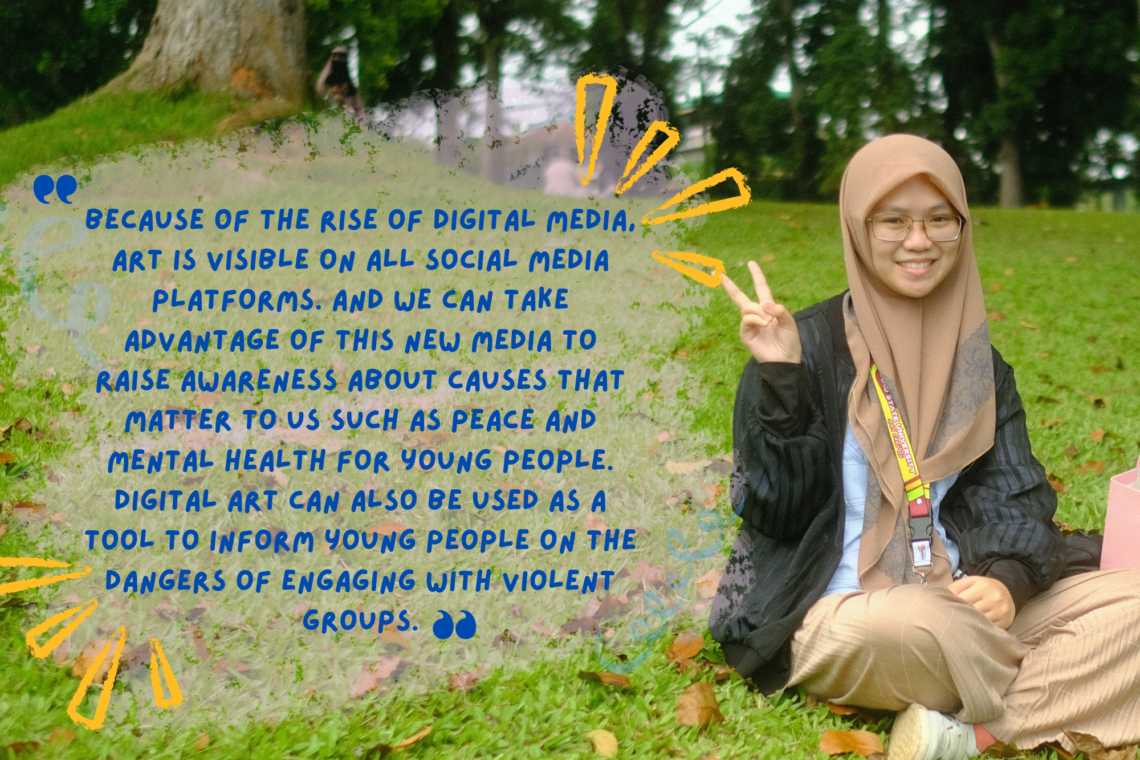Nawal is a 20-year-old Maranao, mental health advocate, and digital artist. She enjoys pursuing her digital art abilities and uses them to create IEC materials for her organizations in the school. Her family is from Bacolod Kalawi, Lanao del Sur but she grew up in Marawi City.
She learned from Kuya AG Sano and Kuya Glendford Lumbao the value of finding her art style and how powerful art is as a tool to share her story and inspire others to create change in their communities. It also made sense to her why the Mandala pattern appears in most of her artworks. Mandala signifies art as meditation and a sense of self-awareness; this reflects her advocacy and emphasis on the value of mental health among Muslim Maranao to nurture inner peace and resilience.
More than the concept and ideas, Nawal found an added support group and a community with the same goal. When she and her co-artist for peace began to get to know one another on the first day, she felt a natural connection. The moment she will not forget is the culture of peace circle where they shared about themselves and got to know others more as well. The sense of stillness and belongingness are profound to describe. If a young adult like Nawal found peace in a group, her actions would be motivated by a peace-promoting mission or goal. To prevent young people from engaging in groups with violent ideologies they must be provided with spaces to nurture their inner peace, cultivate their talents, and a space where they feel safe and supported.
Nawal was in her early teens at the time of the Marawi siege, but despite her youth, she tried to understand why it had occurred and what had caused it. It was challenging to survive a day at that time, aside from socio-economic concerns, unstable mental health was also a major concern, especially for youth like her. She believes that this fear and anxiety permeated the whole of Lanao del Sur until now. Because of Maranao’s culture of “maratabat” or pride, the needed mental health support for children and youth is left undiscussed.
She believes that youth should start discussing mental health matters and address the necessary support instead of romanticizing the culture. Because if the required psycho-social support is not provided, it runs the risk of bringing back the people to a cycle of disrupted sense of peaceful communities. It is important to process and provide the necessary needs, just as the violent extremism that occurred in Marawi caused a lot of distress to the community that is vulnerable to trauma or mental health disorders.
“During that session, a special bond was created because some of the experiences that we cannot share with our friends, we shared in that circle, in that shared safe space. I think that helped us to communicate deeply and I am very amazed because that made us so brave to tell our experiences to each other. “
The Artists for peace circle strengthened their bond. They developed friendships with regular communication inside and outside the school a few months after the program. They made sure that, at the very least, small groups would meet up and catch up over coffee to discuss their plans and ideas for a future workshop on peace education. Before, Nawal only used art to express her feelings. Still, through Teach Peace Build Peace Movement mentors and facilitators, she formed a habit of checking on herself by creating beautiful mandalas.
This also deepens her commitment to using her art to educate others. Nawal could see the power of art to strengthen her role as a youth in preventing conflict and, to a greater extent, the pervasive violent extremism in their community thanks to her in-depth understanding of inner peace and peace education. She sees it as an advantage to interact creatively with other young people about the dangers of ongoing conflict and violent extremism in their community.
“Because of the rise of digital media, art is visible on all social media platforms. And we can take advantage of this new media to raise awareness about causes that matter to us such as peace and mental health for young people. Digital Art can also be used as a tool to inform young people on the dangers of engaging with violent groups.”
An analysis of the use of social media for recruitment from the National Defense College of the Philippines states that terrorist organizations are creating a battlefield in cyberspace by incorporating social media platforms into their communication structures and strategies. Hence, terrorist groups can project a large online presence to communicate with their followers and donors, train their members, disseminate their propaganda to specific audiences, and recruit new members across the globe. Thus, empowering artists like Nawal to share peaceful narratives online can encourage youth like her to choose the path of peace and non-violence. Creating spaces for peaceful dialogue is essential for young people’s voices to be heard and interact with people from different cultures and religions thus widening their perspective and worldview. By creating IEC materials and digital arts, Nawal hopes to share more stories of peace and help in creating a more peaceful online space for all.


